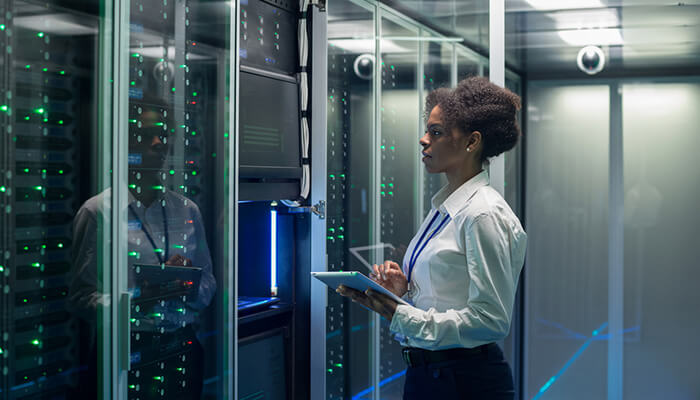As technology continues to evolve rapidly, it’s becoming increasingly crucial for businesses to ensure that their data centers can keep up. It’s known as ‘future-proofing.’ It guarantees that a data center can adapt and accommodate new technologies as they emerge. Future-proofing your data center allows your business to stay ahead of the competition and continue to grow and thrive.
One way to guarantee that your data center can accommodate new technologies is by implementing cable management flexibility. A cable management system that’s flexible and adaptable can help ensure that your data center can accommodate new equipment and technologies as they become available. This system allows easy reconfiguration, allowing your data center to adapt quickly to technological changes. It can help guarantee that your data center remains relevant and effective for years.
Read on to dig deeper into the steps you can take to future-proof your data center.
1. Assess Your Current Data Center
You should conduct a thorough evaluation to get a clear picture of your data center’s current infrastructure. This step includes taking stock of your hardware, software, networking equipment and any data storage and backup systems you have in place.
It’s important to note any outdated or underperforming technology and any potential single points of failure that could disrupt your operations. Additionally, consider the scalability of your current infrastructure and whether it can accommodate future growth.
Once you’ve clearly understood your current infrastructure, you can begin to identify potential bottlenecks and weaknesses. These include limited bandwidth, inadequate power and cooling and a lack of backup systems.
By pinpointing these potential issues, you can take steps to ensure that your data center can handle the demands of the future. It may involve upgrading hardware or software, implementing new technologies or implementing a more robust disaster recovery plan.
2. Invest In Scalability
Scalability is an essential quality for any modern data center. As businesses grow and change, their data center needs to adapt and accommodate increased storage, processing and networking requirements. A scalable data center can save companies from the costly and time-consuming process of regularly upgrading and expanding their infrastructure.
There are several strategies that businesses can use to improve the scalability of their data center. One of the most effective methods is to implement virtualization, which allows multiple virtual servers to run on a single physical server. It’ll enable businesses to increase their servers without purchasing and maintaining additional hardware.
Another strategy is to move to a cloud computing model. In this model, data and applications are stored and run on remote servers, which can be quickly and easily scaled up or down as needed. It allows businesses to avoid the costs and complications of maintaining their own data center infrastructure.
3. Upgrade To More Efficient Technologies
One of the key benefits of using energy-efficient technologies in data centers is the potential for significant cost savings. As data centers consume a lot of electricity, even small efficiency improvements can significantly reduce energy costs. In addition to cost savings, using energy-efficient technologies can help reduce a data center’s carbon footprint and improve its overall environmental sustainability.
Some examples of efficient technologies you can implement in data centers include liquid cooling systems and modular design. Liquid cooling systems use specialised cooling fluids to dissipate heat from computer hardware, reducing the need for traditional air-based cooling systems. Modular design, on the other hand, involves using standardised, interchangeable components that can be easily added or removed as needed, allowing data centers to scale more efficiently and flexibly.
4. Build A Flexible and Adaptable Data Center
A data center that’s inflexible and unable to adapt to new technologies and changing business requirements can quickly hinder your company’s success.
To ensure the long-term viability of your data center, you must prioritise building a flexible and adaptable data center. It means designing and implementing strategies that enable the data center to quickly and easily adapt to new technologies, changing business requirements, and other factors that may impact its operation.
One key strategy for achieving flexibility and adaptability in a data center is to invest in modular infrastructure. You can quickly expand or reconfigure your data center using modular components, such as modular power and cooling systems. It allows you to quickly add new capacity or adjust to changing demands without undertaking a costly and time-consuming infrastructure overhaul.
Another strategy for achieving flexibility and adaptability is adopting a software-defined data center management approach. Using software to automate and manage various aspects of the data center, you can more easily and quickly respond to changing needs. It can include using software to automate the deployment and management of new applications and services, as well as to monitor and optimise the performance of the data center.
Conclusion
All in all, it’s important to continually reassess and adapt to the latest industry trends and developments to future-proof your data center. It can help reduce downtime, prevent data loss, and ensure your business remains competitive in an increasingly digital world.




